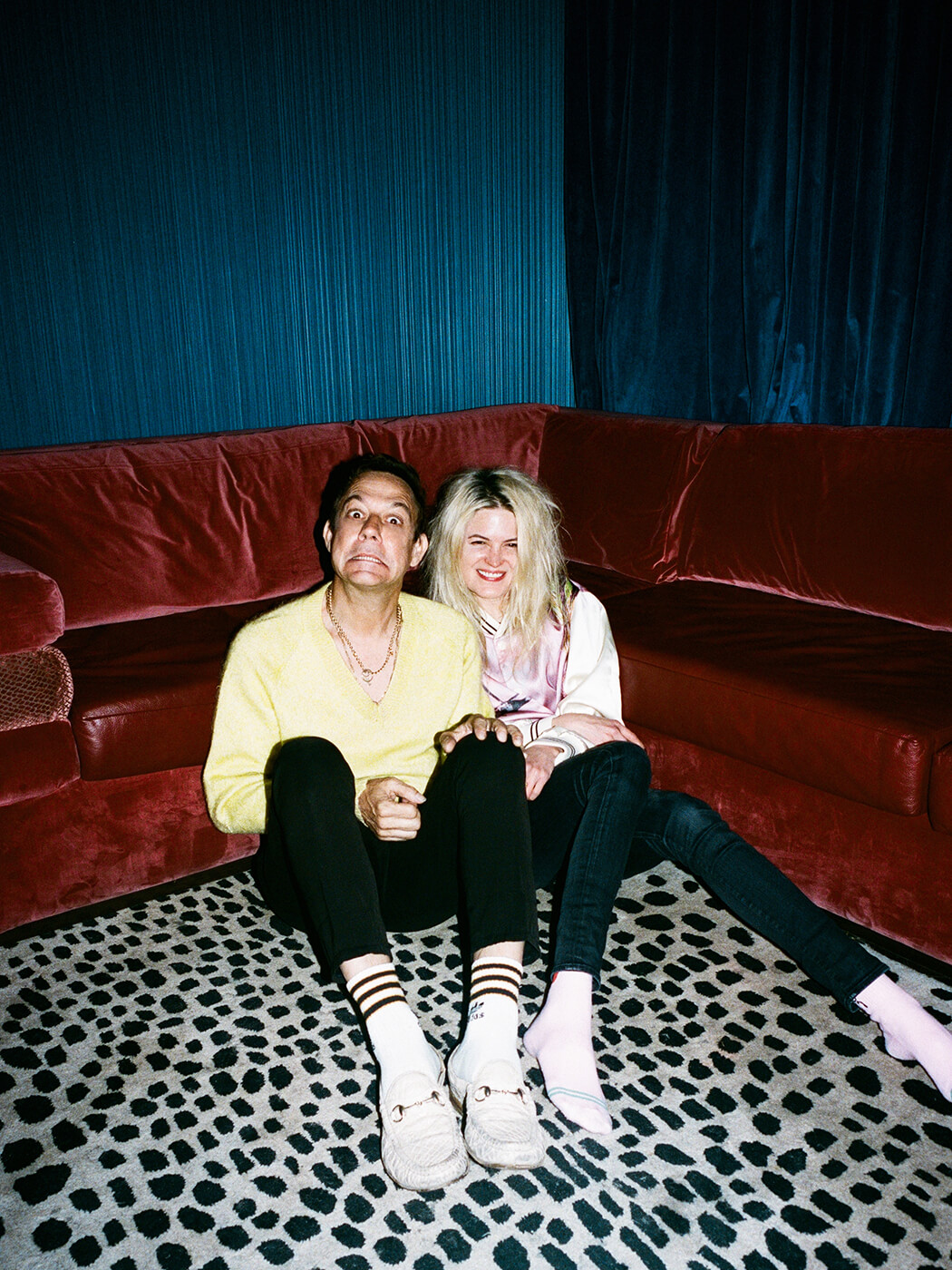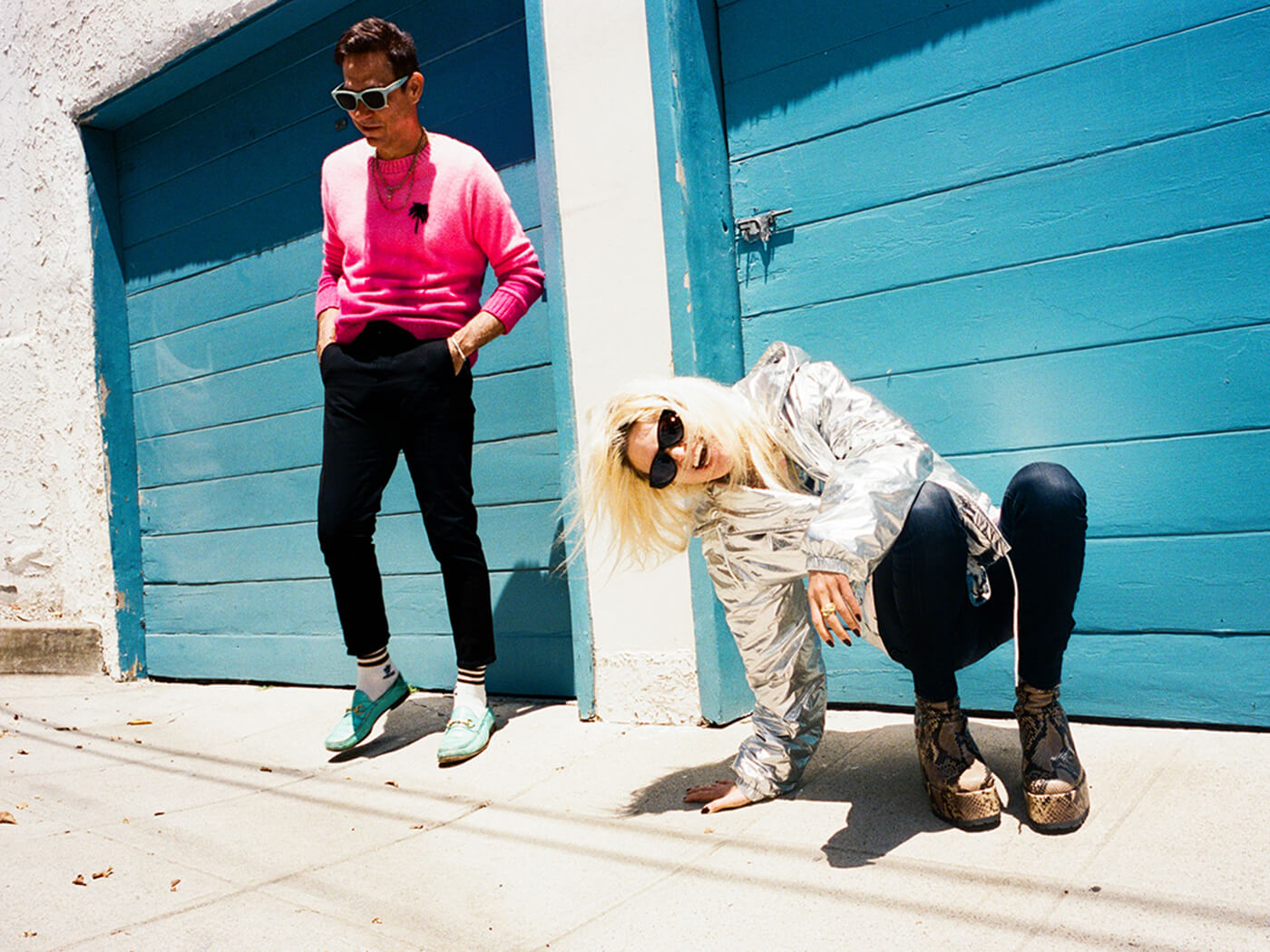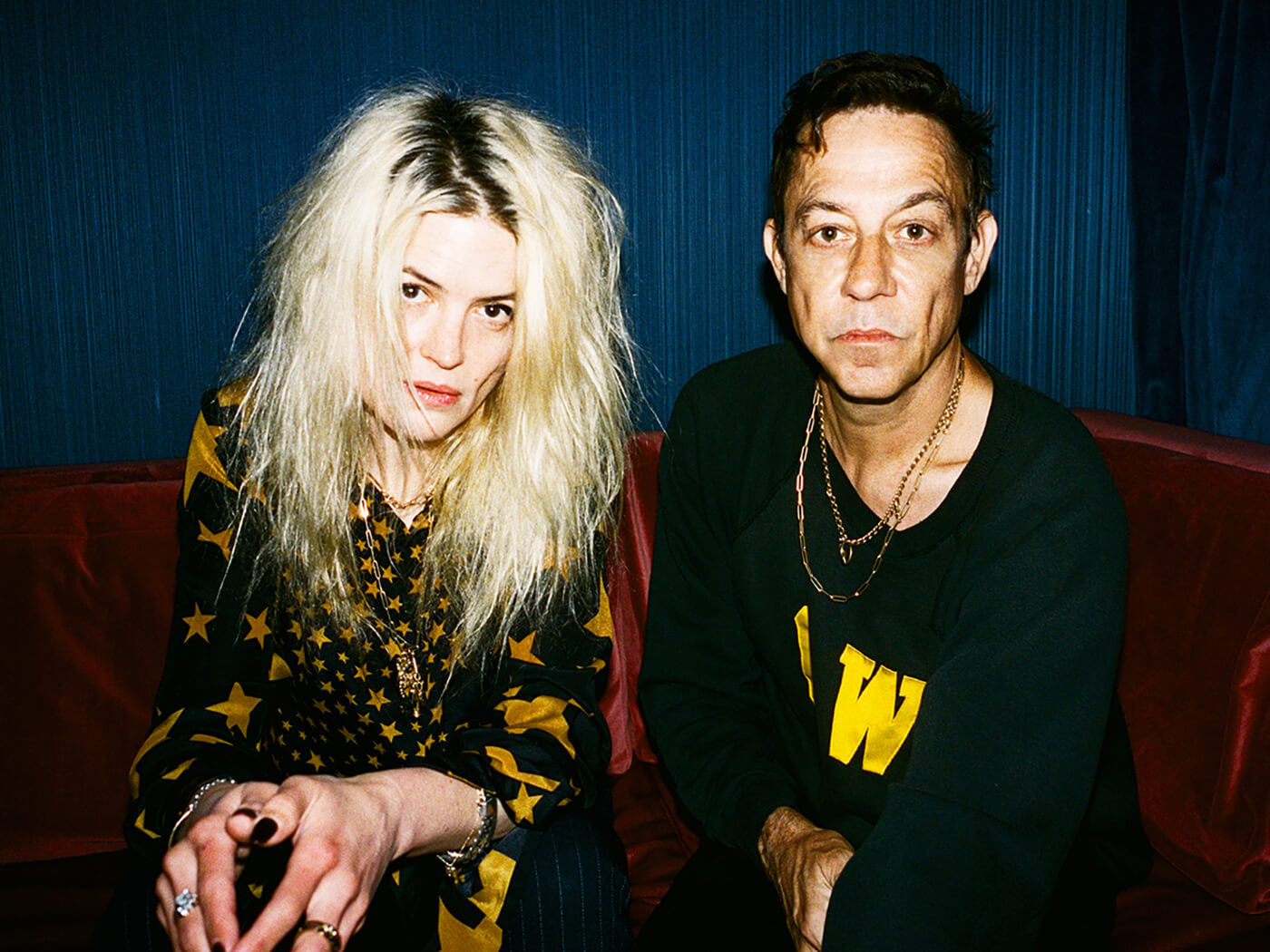Related Tags
“You have to put so much into this to make it work”: The Kills‘ Jamie Hince
Jamie Hince on the sacrifices he’s made in his personal life, his obsession with pop and R&B production, and his enduring love for an old Höfner.

The Kills. Image: Myles Hendrik
“Down here on the Bowery, the city’s got me feeling high,” sings Alison “VV” Mosshart on The Kills’ recent single New York. It is the band at their grizzly, bluesy, fuzz-washed best. The whining, battling guitar of Jamie “Hotel” Hince cuts sharp lines across verses, noodling through the chorus, a well-practiced dance partner for Mosshart’s intoxicating vocals. “The night is dark enough, we’re only seeing stars.”
The track is one of the highlights of their sixth album God Games, a title that has evolved in meaning to embrace concepts as broad as spirituality, control, video games and human creativity versus artificial intelligence.
It began with an ugly amateur painting that was left behind in Hince’s newly bought house. The painting is somewhat generic, likely seen in hotels and diners internationally. In it, a nimble matador faces up to a raging bull. In Hince’s unwittingly adopted new artwork, the details were messy and the proportions imprecise.
Still, it captivated Hince for half a year as he wrote for God Games. The idea that a person might labour over this work, compelled to capture a man and beast in a doomed dance intrigued him. The album artwork for God Games is a recreation of the painting by one of Mosshart’s friends, in lieu of being able to locate the original artist to gain permission to use it.
“Quite often I’m drawn to things I don’t like; religion, violence, celebrity, reality TV, ugliness or whatever,” Hince explains. “I try to realign them into something I understand, something beautiful or something more meaningful, more profound to me I suppose.”
Rather than elaborating on all the philosophical elements, Hince is more inclined to allow listeners to speculate and interpret the artwork, music and lyrics as they wish.
“I’d like to think that those kinds of broad-stroke ideas have legs and can morph and change their meaning for different people as time goes by. Hopefully there’ll be a point when it’s absolutely meaningless and it’s just an album title again, to complete the cycle if you like.”
New York pays homage to the city where the duo made many of their early demos and recordings, touring while staying at the illustrious Chelsea Hotel. It was London, however, where Mosshart and Hince first met while each was pursuing work with other bands.
She was staying in a flat below Hince in London, and continued to be distracted by his noisy guitar from upstairs. In a parallel universe, she may have gone upstairs, banged on the door, and departed. In reality, she identified a partner-in-crime in this upstairs stranger and convinced Hince to form a band.
It was an era before hyper-connectivity, so rather than emailing one another, Hince gave Mosshart a four-track tape recorder to record guitar parts and lyrics on, which she’d post back to him from wherever touring with punk band Discount took her.

Method Man
It is a method of making music that has persisted for the pair, thriving in their own writing and demo-making space while indulging other art forms, side projects (Mosshart was part of The Dead Weather with Jack White), and nurturing their personal relationships. So prolific are they, that Hince suggests the band have only released a fifth of the material they’ve written and demo’ed.
“There’s a lot,” concedes Hince. “I have about half of Alison’s amount of songs, and mine are mostly without lyrics or partial lyrics. A lot of my unreleased songs contain what we call ‘hum-a-na-hum-a-na’ where I sing gibberish to get a vocal melody and then fill in the lyrics later. I’d have to finish them before I played them to anyone except Alison. For Alison, a song is a song when the lyrics are written. She’s way more prolific than me in that sense, with words. So she has — I’m sure — upwards of 200 songs that haven’t seen the light of day. That’s probably an underestimate actually!”
The juxtaposition of time alone to foster ideas, then coming together to intensively sculpt their material into finished songs is part of The Kills’ DNA, explains Hince.

“It seems to work still. It kind of has to be that way. For instance, I can’t comprehend writing lyrics with someone else in the room, making suggestions, taking suggestions, conferring on rhymes or metaphors or whatever, I can’t do that.
“That part of it works better in isolation for me and anybody who’s written hundreds of songs knows that feeling well: when it all just comes to you in a moment and you’re just a lightning rod channelling this bolt of ideas. That’s how it is for us anyway. We have more power apart when we’re starting an idea, and more power together when we’re finishing it. It’s like you have to be a dictator at the beginning and a communist in the end. Something like that.”

Two Sides
He is candid in confessing that the closeness he and Mosshart have fostered over more than two decades has not been without sacrifice.
“Historically it’s hurt most of my relationships,” he admits. “It’s hard for partners to understand all that noise and all that time you spend on this. You have to put so much into this to make it work and marriages and friendships inevitably suffer. Those lyrics ‘I love so hard my gang is ghosts’ in My Girls My Girls? That just about sums it up.”
God Games has already offered up four singles, each of them layered in distortion and synths, but all promising the thrusting, slinky, snarling guitars that have defined The Kills for over two decades. New York, LA Hex, 103 and Wasterpiece are volatile and melancholic, revealing — more than past albums — Mosshart’s wonderful vocals.
Longtime fans may recall her inclination to avoid stage talk and an almost reticence to lead a song in those early days. The live instrumentation is impressive, as ever, and far from formulaic.
“For a few years I’ve been consumed by the way pop and hip hop and R&B operate in a much wider sonic spectrum than guitar music,” Hince says. “There are much less analogue stages in the recording process of those genres. Often, it’s only the vocal that’s even mic’d, the rest of it is all ‘in the box’ digital with no cables.
“That kind of lets you run wild with frequencies like sub bass and those sounds that operate at 16k and above, and they’re all super clear and hi fi. That’s the beauty of the digital domain.”

Galaxie Brain
Naturally, Hince figured this could work a treat when partnered with traditional live guitar – his own favoured model is the Höfner 176 Galaxie Deluxe Sunburst, boasting a juicy low end for all the dark, grungy bass depths mined by The Kills. Hince customises his 176 guitars through adding Bigsby pickups as a result of six surgeries and cortisone injections to his hand.
“I tried to apply that ‘in the box’ approach to my busted old guitars and vintage amps. I thought it’d be cool to attempt that sort of thing with electric guitar music. So, I had four amps running on most songs; one would have an octave pedal pitched two octaves down, one would be one octave down, and the next would deal with all the mid-range, and the fourth would be the painfully brittle high end. If you isolated it, it would sound like someone was smashing glass in your eardrums, but together they all made a decent tone I think.”
He clarifies, “All the digital manipulation was confined to the beats. The guitars were recorded straight in as usual, all analogue chain apart from the DAW. That was a clear rule from the start; the beats would be chopped and manipulated to sound digital, and the guitars and vocals would be raw analogue live performances. That seemed like a good representation of my musical world.”

This album is a multi-layered, complex beast. Translating it to the stage will not be a piece of cake.
“I’m thinking about it a lot the closer it gets,” concedes Hince. “How to perfect that contrast of digital beats and raw live performance. The film world does it brilliantly, layering sounds from the future with nostalgic old sounds from the past seamlessly in one scene. I want to do that, as a two-piece, stripped down, raw and anarchic but on a bed of relentless digital beats. We’ve always wanted the live experience to be rare and precious, different from the sound of the record. It’s vital. It’s what makes live guitar bands so unbeatable.”
The Kills kick off their tour on 2 February through August 2024.
